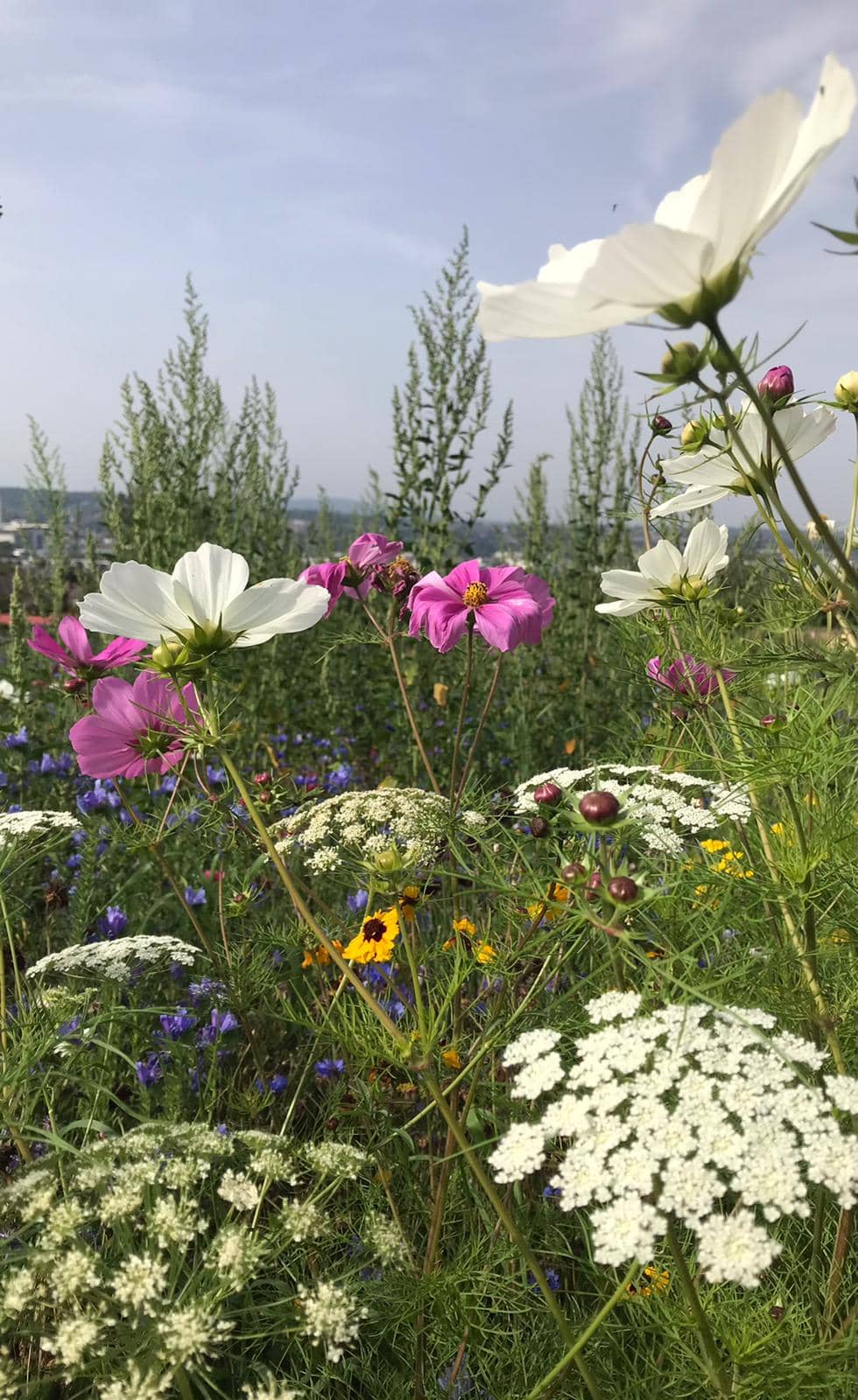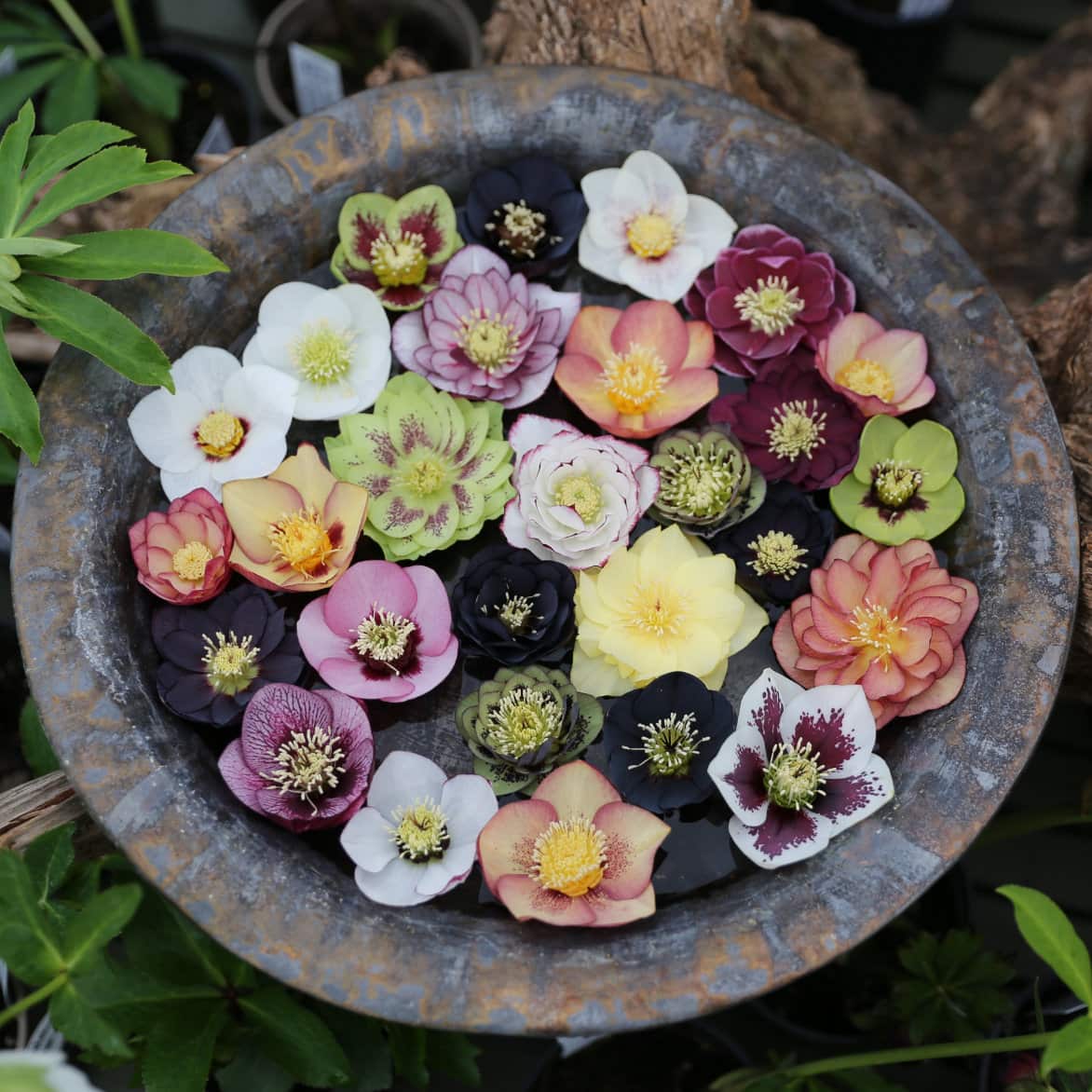5 things you must consider before making a wild flower meadow
Making a meadow & not sure where to start? Have you tried before and it didn’t go well? Read our in depth article to find out the secret to making a wild flower meadow.
Meadows are somewhat of an enigma.
For many of us, wild flower meadows conjure images of painterly blooms and nostalgic rural scenes, subconsciously engrained in our view of the stalwart English countryside. However, despite their timeless beauty and immense benefit to wildlife, the UK has tragically lost 97% of wildflower hay meadows since WW2.
In recent years there has been a strong movement towards naturalistic planting in garden design and modern ornamental meadows are a big trend which isn’t going anywhere fast. Bright and cheerful annual seed mixes have been developed to establish quickly, provide a riot of colour, and attract plenty of pollinators. What’s not to love?
Meadows and annual wildflower mixes are becoming a popular option for domestic gardens too. We often get asked to include them in our garden design schemes. However, with so many different associations towards the words; wildflower, weed and meadow, along with varying degrees of tolerance towards untidy planting, it can be difficult to fulfil expectations when creating a brand-new meadow from scratch.
1 . Choose your wild flower meadow
There are two main types of popular ornamental meadow – annual and perennial. Either can be made of native or non-native, non-invasive plant species which are often called ‘wildflower’ regardless of whether it is truly wild (in the native sense) or not.
An annual meadow is 100% flower seed that germinates, blooms and turns to seed, completing its lifecycle in one year. They are often very colourful and provide instant impact within just a few months. Some hardy seeds in the mix may germinate and grow the following year, but it is advisable that they are re-sown from scratch annually in spring for a consistent look.
A perennial meadow can be either 80/20 grass to flower or 100% flower and contain largely hardy long-lived species that continue year after year with an annual cut. It is more permanent, slower to establish but lasts longer if got right. Perennial meadows are also available in turf form, which is much quicker to establish and has a higher success rate compared to seed but is not so kind on the bank balance. Perennial mixes tend to contain more conventionally native wildflower varieties but always check the seed mix if you are after the traditional hay meadow look.
2. Eliminate unwanted wildflowers (aka weeds)
Correct preparation is critical to meadow success. Clear away the existing vegetation (chemically or organically) to a low fertility base and make sure there are no weeds in the areas cleared. You may need to ‘clean up’ the soil over the period of a whole year before your first sowing.
Perennial meadows in particular, are notoriously difficult to get established due to slow growth habit initially and weed ingress from prolific competition in the form of Creeping Thistle, Dock, Willow herb and Nettles (to name a few). Keep any weed growth around the edge of the meadow area suppressed by mowing or strimming to prevent seeding. After the new meadow has established and has a closed canopy, this is still an occasional job. Spot weed any obvious intruders whilst the meadow germinates and later remove the seed heads or dig up any weeds that do grow.
3. Check the soil fertility
If the area to be turned to meadow was previously lawn or paddock, it will almost certainly have highly fertile soil leading to aggressive weed invasion and long floppy stems that look very straggly after heavy rain or wind. To reduce this, remove as much topsoil as you can (ideally to use elsewhere in the garden), down to subsoil if possible. This will expose a low nutrient environment which makes it difficult for the stronger weed seeds to germinate.
Replace the topsoil with a 100mm layer of infertile growing medium such as MOT1, 6F2, ground up ceramics, bricks or concrete and even sand to create the perfect environment for a perennial meadow. It sounds completely against many gardening principles and recalls stories of cowboy builders burying contaminated rubble, however, it is tried and tested where meadows are concerned.
There has been considerable research into the benefits of growing in sand or rubble beds and great results from turning brownfield sites to nature reserves. Most meadow species have evolved to thrive in low quality soil which means they develop robust, shorter stems and become more resistant to periods of extreme weather. Perhaps it is a good opportunity to use up an old patio sub base and reduce the amount of waste produced when creating a new garden.
If removing topsoil is not an option, sowing an annual seed mix for the first three years, will do a great job of drawing out nutrients from the topsoil, whilst preventing perennial weed germination and attracting pollinators. The annual seed mixes flower at a quicker rate than the perennials and can often outcompete perennial weeds too. Even if this is not the long-term aim or aesthetic for your project, it is an short-term hack to improve final establishment.
High fertility is often the biggest reason for perennial meadow failure, as aggressive grass species can outcompete the wildflower. Adding yellow rattle seed (Rhinanthus minor) which is semi-parasitic and feeds off the nutrients in the roots of grasses can help the slower growing wildflowers to develop.
Alternatively sow a 100% flower mix in the first year and introduce a native grass seed mix later. Avoid rye grass, which is very vigorous but remember, grass is not the enemy! It is vital for biodiversity and will support fauna such as grasshoppers, crickets, butterflies, moths, and harvest mice.
4. Do you have the time or resources to maintain it?
A successful and beautiful perennial meadow is an evolving project that requires a strict strategy and a good dose delayed gratification. Sow perennial mixes in autumn to expose the seed to cold temperatures during winter for maximum germination. For annual seed, sow between April and May to avoid losses due to cold winters.
5. Expect nature to do it’s own thing and allow the meadow to evolve
Virgin ‘seed grown’ meadows have a life of their own and the balance of species can change each year depending on the environmental conditions. In the meadows first year, before flowering, cut the perennial meadow to encourage lateral growth and close the canopy, which prevents unwanted weed seed entering the sward. It may seem counter intuitive, but it is worth it for a stronger meadow and more flowers in the second year.
Cut again after flowering and make sure all the excess vegetation is collected and removed. This will reduce fertility and allow light to enter the base of the meadow to encourage dense basal re-growth. If this all sounds like too much trouble and heartache, a predictable annual (rather than perennial) meadow mix may be the one for you.
When making a meadow … think of the bigger picture!
Creating a meadow is an evolving and worthwhile process. It will eventually find its own rhythm if managed correctly and provide a visual treat and wonderful habitat for years to come.
Emily Barnes
Emily joined the Bestall & Co team as a Garden Designer and Project Lead after attaining a degree in Horticulture at Nottingham Trent University. Achievements include coming in the top 3 at the Northwest and North Wales Regional Final of The Young Horticulturist of the Year 2019 and winning the People’s Choice Award for her garden ‘Elements of Sheffield’ at RHS Chatsworth Flower Show. Emily has a keen eye for design detail, a passion for all things plants, as well as a deep love for the great outdoors and wildlife.

